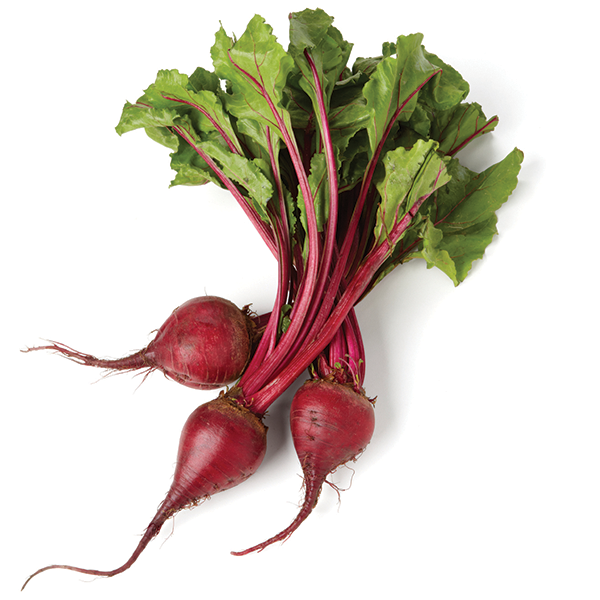
Beets aren’t universally popular, but they are popular with those looking to add a nutritional boost to their diets. Promote them as a healthy side dish option and offer plenty of preparation advice for those unfamiliar with the root vegetable.
Shipping
50-lb. mesh sacks 45-lb. wirebound crates/cartons, bunched 12s 38-lb. cartons/crates, bunched 24s 25-lb. sacks, loose 20-lb. cartons/crates, bunched 12s RPC 6409, 6411, 6416, 6419, 6420 Retail/foodservice packs 12-count bunches per carton
Grades
U.S. No. 1 U.S. No. 2 For each grade, three types are designated: bunched beets with short-trimmed tops topped beets
Handling
Good-quality product will be relatively smooth and firm with dark color and unblemished skins. Tops should be young, clean, fresh and tender. Bulk beets should be fresh and dirt-free. Any dry or damaged leaves should be removed. Avoid beets that are shriveled, soft or have flabby skins. To avoid damage, store them in pallet boxes or crates rather than bulk containers. Early- or new-crop beets usually are sold in small bunches with tops attached. Late-crop beets usually are sold topped. Beets are subject to wilting because of rapid water loss and should be kept in sufficiently high humidity. Small beets soften and shrivel faster than larger ones. Before storage, beets should be topped and well-sorted to remove diseased items and those with mechanical injuries. Sorting out suspect specimens will prevent undue shrinkage because of storage decay. Temperature: 32 F, 0 C Relative humidity: 98-100% Mist: lightly Typical shelf life: 30 to 90 days, 10 days for bunched beets Somewhat sensitive to freezing. Can be lightly frozen several times without sustaining serious damage.